There’s a list of solid reasons why the blog I’m about to write is just now being born, despite ts presence in my craw for over a week. Among them—sickness, great developments in my neighborhood, house duties and other jobs.
But deeper than that, writing this particular blog terrifies me.
The topic: power, patriarchy and inequality within the “unnamed” (and highly decentralized) movement of community-building/inclusion/local living/empowered citizenship.
It was under this fuzzy banner of “community-building” that me and a bunch of beautifully sincere, innovative, “un-credentialed” change-makers gathered at the Connecting 4 Community conference last week, and it was here that the topic of power and inequality burst onto the floor of collective conversation. It came with a clarity, focus and force I have not yet witnessed in my 6 years in this movement, and the ways I experienced and watched others experience this has given me invaluable new insights into the issue (as well as some nagging unanswered questions).
How do we practitioners of community building, with all our ideals of equality, empowerment and co-creation, replicate and reinforce structures of imbalanced power within our own movement? How are people in traditionally marginalized groups (women, people of color, people with lower incomes, etc.) left out, overlooked, or under-celebrated—and what can we do to change this?
This is a topic that, up until now, I’ve only spoken about or heard discussed in side, shadow spaces–break-off walks with other women after lunch, where the men won’t hear… around kitchen tables with all-female colleagues, or–much more rarely–with male colleagues who have parallel concerns based on their own experiences of inequality based on race, class, or other areas.
Perhaps because this issue seems so under-explored or -exposed, writing this blog has become a gargantuan effort. I feel compelled to tell “the whole story” of how this topic broke onto the scene at the Cincinnati conference and how I and others reacted to it, because it all felt important for drawing out both the questions and the lessons I’ve been left with and hopefully creating a space for useful dialogue from a diversity of voices and viewpoints.
I hope you’ll bear with me and share your honest thoughts along the way. (Editing suggestions are also very much welcomed!) Also, you may want to check out my report on Day 1 of C4C for some context, if you haven’t already.
* * *
Writing this blog terrifies me for several reasons.
First, the topic is terribly close to my heart and experience. I’ve grown up female in a world that lift mens’ capabilities, accomplishments and general right to powerful roles
above those of women–every day, in hundreds of subtle but insidiously influential ways. I’ve worked through a lot of feelings and ways of positioning of myself toward the world since I realized this, and all-in-all, have come to a pretty good place. Still, there are still many buttons inside me–deep wounds, inherited insecurities, buckets of fear, and hot streams of anger I haven’t yet learned how to navigate with grace or desired impact.
Secondly, I’m terrified of the negative reactions this blog might provoke from the men in my field, many of whom I thank daily in my heart for what they have taught me, shown me, and given to me. Some of these men’s good graces–or lack thereof–have a real impact on my chances of making a living in my chosen field.
Thirdly, I’m terrified of being a hypocrite. By bringing up inequality, how will I expose my
own blind-spots, pretentiousness or abuses of the invisible privileges I enjoy as a white, able-bodied, straight American raised by two intellectuals of upper-middle-class means?
Finally, I’m afraid of mine being a voice of dissent, disruption or divisiveness within a community and movement that holds claim to one of the deepest caverns of my heart, and whose health and development I want nothing more than to protect, promote, and nurture with every word I speak and thing I do. I want to damage nothing and no one, and this topic seems to come with so much fire and danger.
In this world, the word “feminist”–which means believing that women should have equal treatment and opportunities as men in society–is still either a dirty or furtively-used word. Conversations about women’s equality in the actual world rarely happen, anywhere but between women, in hushed side-conversations or around kitchen tables. Efforts in its name rarely seem to happen without plenty of contentiousness and polarization. This also seems to be true about most other discussions that involve power imbalances in our 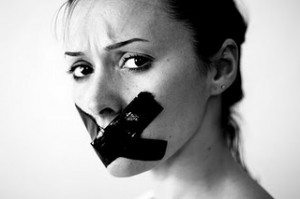 world around such groupings as class, race, ability or sexual orientation.
world around such groupings as class, race, ability or sexual orientation.
So it seems pretty hard to bring this up and not cause some kind of dissonance… and I have no idea if I’ll manage to do anything but open a can of worms, which folks will either dig into or walk away from. My hope is that this can be part of a productive conversation that beats the odds.
* * *
Zoom to Cincinnati, day two of the conference.
Since the beginning of day one, I had sat together with 100+ other participants in the beautiful ballroom of the Cincinnati Club (an example of “architecture that humanizes,” in Peter Block’s words), taking in lecture-style talks from leaders in the world of community and social/economic/spiritual innovation (including Peter Block, Angeles Arrien and Walter Brueggeman).
The lectures were punctuated by to small 3-person groups in the tradition of Peter Block’s “A Small Group” in which we’d process and personalize the rich presentations, prompted by sufficiently “vague and uncomfortable” questions. After these break-outs, we’d be invited to share what struck us with the whole room.
Besides prompting insights and a quality of exchange way beyond what normal gathering styles tend to offer, this format also offered the opportunity for us to practice the “neighborly protocols” of conversation that help promote community and authentic engagement in any environment (“Don’t be helpful; be curious.” “Sit only with people you know the least.” “Don’t wait to be chosen.”) I met amazing people and had a million rich “aha’s” of my own around the themes of story, authenticity, bottom-up change and disruption of the dominant narrative.
About mid-morning on Day 2, Peter Block re-convened a break-out session with this usual full-room “stand and report” invitation. One brilliant insight followed another–until suddenly, everything changed. A man stood up and began to speak—at first waveringly then with increased passion and sharpness.
“I decided I didn’t have the guts to say what I was feeling,” he said, “but now I’ve been told I have to… I felt some anger in hearing talks about subversive interruption I found myself wanting during [Peter’s] talk and Walter’s talk to stand up and interrupt.” He went on explain that he felt angry and frustrated with “having too many old white guys up there talking at me. There’s more than content to speaking. There’s taking up space and talking at us.”
The energy in the room, and in my mind and body, shifted palpably in that moment. Suddenly the figureheads in the room of anti-establishment were being framed as establishment—personaly, directly. Within me, a strange hot energy was rising as my own fires of dissent and frustration gained fuel from his words. I knew my friends were feeling the same way.
New people stood up now. One woman in the back of the room and echoed Standing-Man’s frustration: “My experience of the last day and the last few days has been a royal experience and not the royal treatment… We haven’t heard any stories from the bottom up. We have heard how important it is to listen to the bottom up but haven’t heard stories.” She added, “I woke up this morning and did not feel anxious to come.”
She also a sentiment that echoed mine and probably others’: “You know I love you, have done great things, stories to be told. I always love you, even when I’m angry, especially when I’m angry.” She told of how Peter has spent generous time working with a young playwright in West Cincinnati and how much she admires and appreciates that. A couple of other folks spoke, then we went on break, abuzz.
* * *
You can go on to read Part 2, or take a moment and share…
What strikes you about this, so far?
What are your own experiences of power, patriarchy, equality–or the lack of it–in the world of community-building, or in other contexts?
What are some useful ways you’ve seen it addressed or handled?
Other reading:
The same event from another point of view (by Megan Sheldon of Narrative Communications)

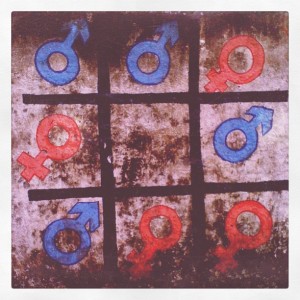
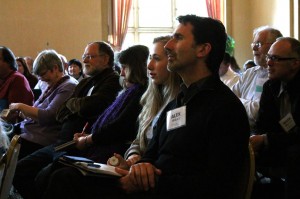
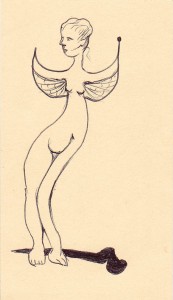
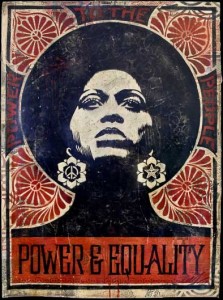

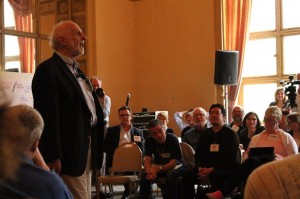
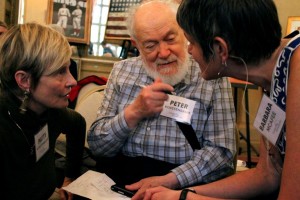
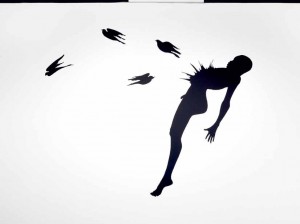
“As she sees it, the problem with resistance-as-politics is that it does not ‘contain a critique, a vision, or grounds for organized collective efforts to enact either… [resistance] goes nowhere in particular, has no inherent attachments and hails no particular vision’ (Brown 1995: 49). In light of these inadequacies, Brown calls for the politics of resistance to be supplemented by a political practices aimed at cultivating ‘political spaces for posing and questioning political norms [and] for discussing the nature of “the good” for women’ (Brown 1995: 49). The creation of such democratic spaces for discussion will, Brown argues, contribute to teaching us how to have public conversations with each other and enable us to argue from our diverse perspectives about a vision of the common good (“what I want for us”) rather than from some assumed common identity (“who I am”)”
your journalism has both, as i see it. leave us with a thought-provoking question. how can i, as a man, not be such a bastard? how can i, as a woman, speak up, be heard, without simultaneously attacking and defending the 2nd wave status-quo, offering liberating and original answers to questions, and questions to (un)-answered answers, making light of the inherent assumptions in the “ignored”, “assumed”, and therefore marginalized voice.
good pictures, too. i like the pictures.
What struck me that day was that I realized as an African American woman that had been in the room the year before and heard some of the same things, I didn’t expect things to change. This was sad to me. My experience this year was that it changed for a minute and then went back to the way it was being done before. I wonder how much of this is due to the fact that we are still looking to the masculine to teach us about community but the embodiment of community comes from the feminine.
Hi. I’m the “Standing Man” referred to in the blog. Thank you April for your post. I see so much here that we could talk about!
At the conference, I heard some others say what Quanita says above: “it changed for a minute and then went back to the way it was being done before.”
Hearing this, I realize that we had an opportunity to change things even more, but we didn’t. For instance, there were enormous empty spaces in the room next door, why didn’t a “we” who wanted to change the dynamic occupy these rooms ourselves and go forward together in a new way? Why did we not join together to flower something new in the midst of the group?? How can we build a basis for expanding the opening in a miraculous, beautiful way at the next chance? 🙂
I am approaching this occurrence as a skill-learning opportunity — next time, we will take the seed of change and expand it together just a little bit more. (Wait a minute. I do not want to say “it,” as in ” ‘it’ changed for a minute,” or “let’s expand ‘it.’ ” To say “it” is to talk as if this were something outside of us. This is about “we.” As long as we speak about an “it” changing, we are giving up our power.)
In the spirit of skill-learning, I would like to reflect on what happened in a way that makes us more prepared on the next occasion.
A few reflections:
1) ironically, I think it is important for white men to disrupt the patriarchal pattern, in part because then the opening is less likely to reinforce a splitting along gender or race lines; speaking as a white man and a person who would like to disrupt the pattern, I want others to know that I need your support in order to do so and in order to carry through from disruption to lasting, meaningful change (in saying this, a caution to myself: do not stop looking for what more I myself could do);
2) although I called the pattern “patriarchal,” I’m not satisfied with that term; I am more focused on the “arch” (rulership) in “patriarchal” than the “pat” (male/father); my deeper goal is to disrupt patterns of rulers-and-ruled by opening space for collaboration and mutual, equilateral co-ordination; I do not want to replace one set of dominators for another;
3) lots of people thanked me after my disruption, and I noticed that being thanked didn’t always feel 100% great. I wasn’t always sure why. Now I’m thinking that’s partly because thanking involved dropping the ball and relaxing, instead of focusing on next steps. Thanking can be distancing if it doesn’t involve in making a “we”;
4) two conditions were key in giving me what I needed in order to stand up and make that disruption:
a) first, I gained strength from expressing myself in the small group before speaking to the larger group; the small group gave me a chance to rehearse, gather myself, and find some allies; a good principle to remember for designing change;
b) second, I gained strength because another person invited me to speak — a man, a person of color from my small group, stood up, took the microphone in front of the large group, said a few words, and then — before all the others — invited me to speak. I felt hugely supported and in a way “credentialed” by this person’s action, it gave me courage and a kind of entitlement. I felt “nominated.” My lone, vulnerable “I” was redoubled and shielded. I was reminded of the function of “seconding” (like “I second the motion”) in the old style of Robert’s Rules of Order. This experience of being invited to speak was quite profound, so I am thinking of its implications for group-process design. I also took strength that the invitation came from a person of color, because if I am going to “break ranks” with one of my most visible identity groups (white males), I want to know that I have a safety net of love and support from people of other identity groups. Also, this invitation from a person of color helped me to feel as if the “disruption” that “I” made was being made in the spirit of a “we” that was already modeling the kind of collaboration across difference that I wanted to stand in support of. Thank you my friend, for your invitation.
Those are some of my reflections. I feel like a beginner and invite support.
– Marc